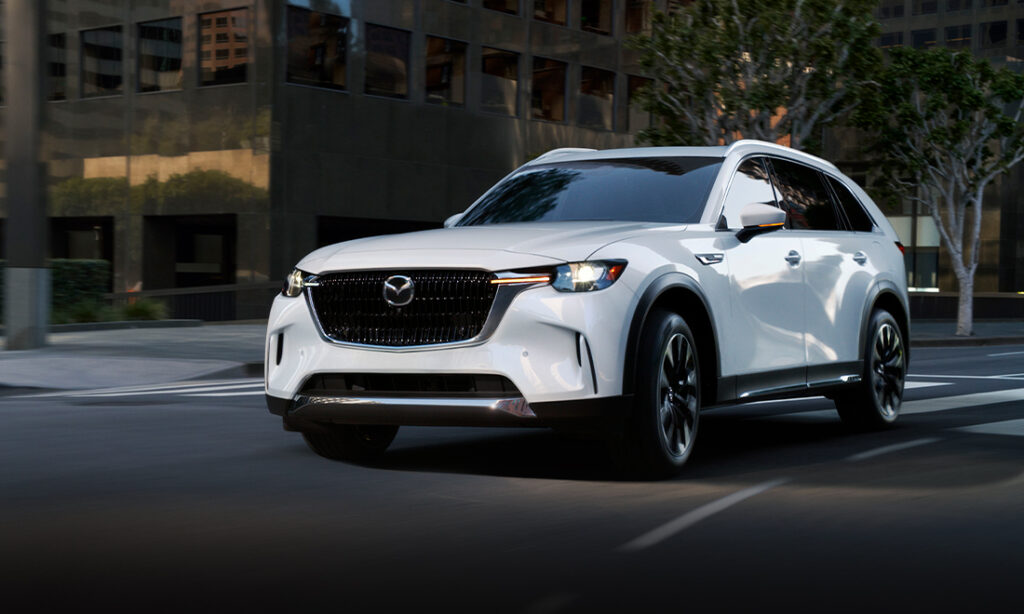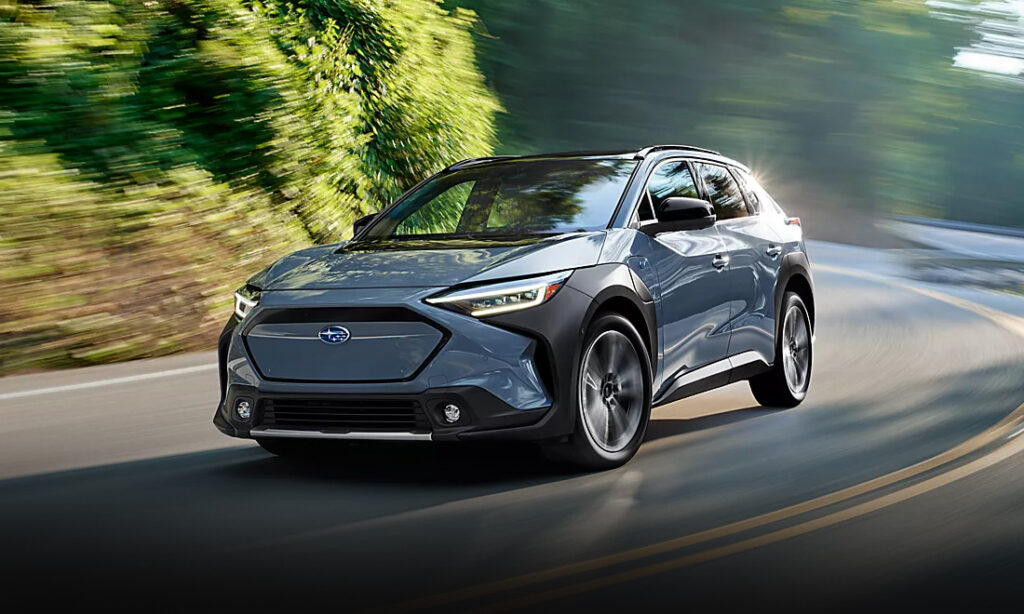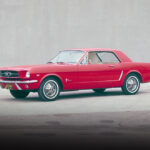AMC AMX vs Plymouth Duster
It’s a battle of the underdogs in this AMC AMX vs. Plymouth Duster comparison that looks back at some cool rides from a pair of long-gone manufacturers.
AMC AMX vs. Plymouth Duster
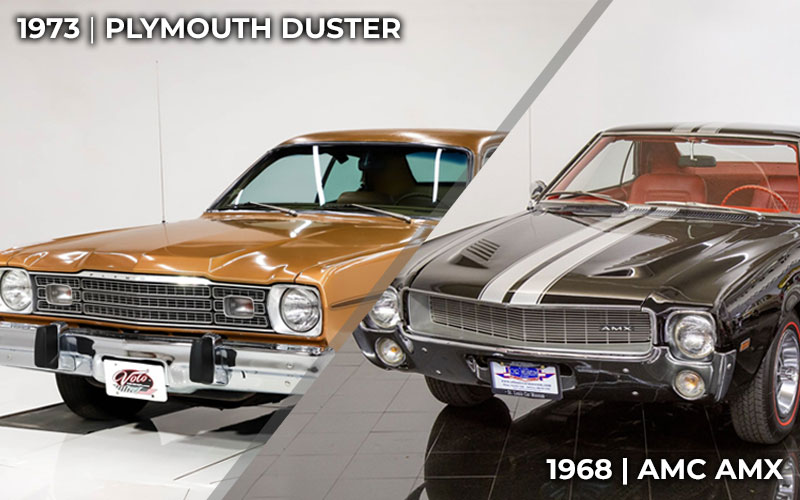
As the 1950s came to a close, Detroit automakers were fat and happy making big gas guzzlers that were gobbled up by consumers in the post-WWII economy. However, foreign imports of small cars were adding up to well over half a million sales by this time, and Detroit was forced to react by creating legitimately solid compacts.
Across Lake Michigan, in Kenosha, Wisconsin there was another domestic automaker that had already gotten on the economy car train – American Motors Corporation (AMC). Maker of such famed small rides as the Rambler and Gremlin, at this point AMC was gearing up to challenge the Big Three and their pony car segment. Which set the stage for this AMC AMX vs. Plymouth Duster matchup.
The AMC AMX: The Radical Two-Seater Underdog
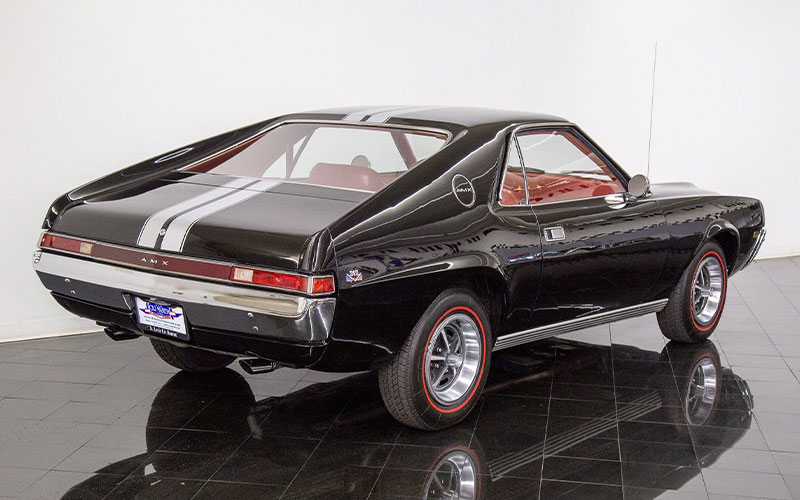
In most competitions, there is an underdog, but this is a story where both contenders could be considered the little guy. Chrysler, a perpetual third-place finisher to Ford and GM, but still part of the Big Three versus AMC, which struggled for decades against this three-headed monster until being absorbed by the competition. One of AMC’s mightiest attempts at stepping up to the plate would have to be the AMX.
Short for American Motors Experimental, the AMX was a radical ride when it hit the streets in 1968. At the time, AMC was trying to shed its dowdy geezer-mobile image and bring a more youthful demographic through dealership doors. Their new Javelin, which arrived just months earlier, was designed to compete with the likes of Ford’s Mustang and the burgeoning pony car segment. It was notable for a semi-fastback roofline and offered a range of trim lines from economy to muscle. Check out our Javelin retro review for more details on this classic AMC.
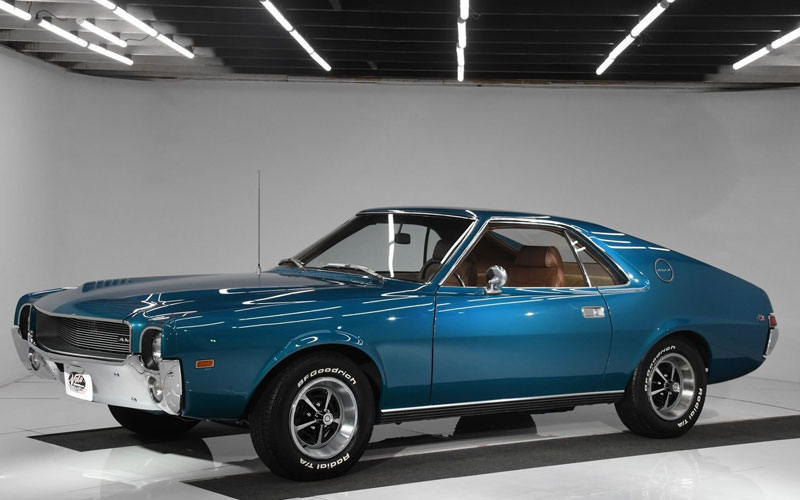
By all measures, the Javelin would go on to be a success story for AMC, produced over two generations between 1968 and 1974. However, it was the AMX that would be the real noisemaker. Starting with the Javelin, AMC cut the wheelbase by 12 inches and deleted the rear seat. Suddenly, the already handsome Javelin was a stanced-out badass with a huge hood, short deck, and room for two. This cabin configuration would place the new AMX in a class of just two American-built two-seaters – the other being a Corvette. Very radical.
The AMX Had Big Power and Great Handling

Right out of the gate, AMC stuffed every AMX with a V8, ranging from a 290 CID up to a 390-cube brute with 315 horsepower. Not only that, the AMX had sports car moves to go with the straight-line power. This was a particularly unusual combination in Detroit at the time, where domestic muscle cars were made to race between stoplights, while the European imports delivered vehicles with handling skills.
AMC went on a marketing blitz to promote their wild new ride, introducing it at Daytona where the AMX 390 was running a relatively shocking 130 mph. Playboy was enlisted to drive up the sex appeal with AMC holding dealer meetings at Playboy Clubs around the country.
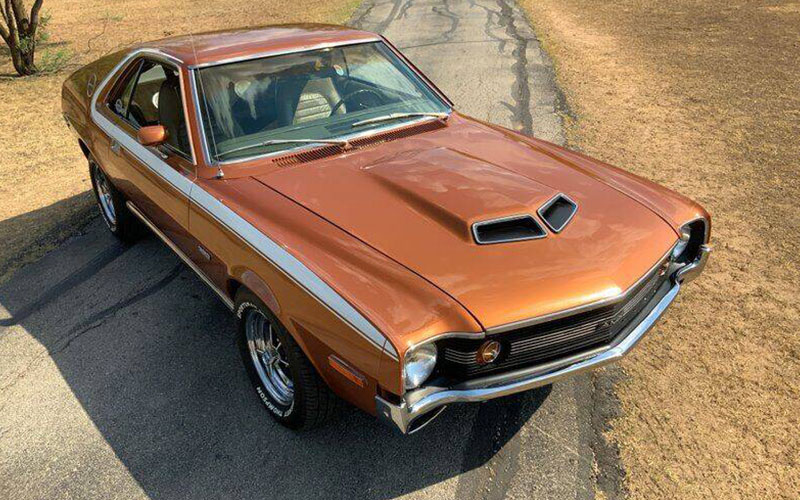
AMC also went into business with Craig Breedlove, the land-speed racer famed for his Spirit of America road missile. With a heavily modified AMX, Mr. Breedlove clocked an official 189 mph at Bonneville and an unofficial 200. The AMX was even included in Hertz’s notorious Rent-A-Racer program, sharing space with Shelby Mustangs, Jag XKEs, and Corvettes.
Now, you would be forgiven for thinking that this combination of style, speed, handling, and marketing resulted in a knock-out success for AMC. It seems logical. However, that was not the case. The Wisconsin automaker sold fewer than 7,000 AMXs in 1968, the first year of production. When the Plymouth Duster debuted two years later, a whopping 217,000 were built.
The Plymouth Duster: Popular, Fast and Colorful
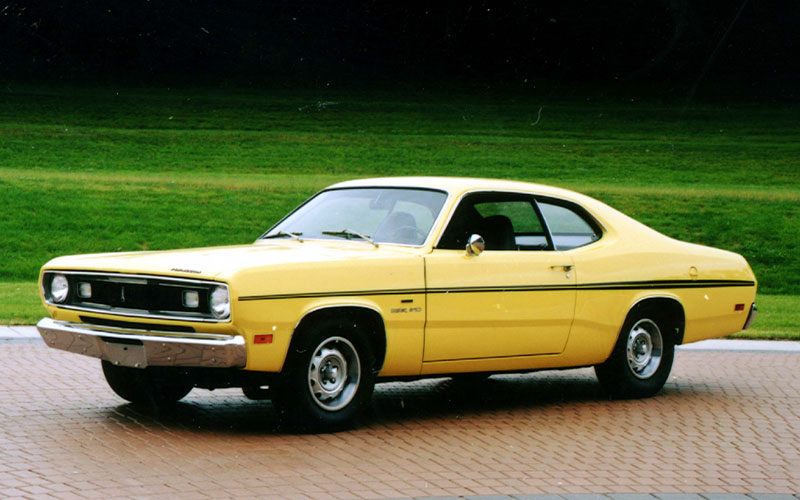
Plymouth was after the same thing as AMC with their new Duster – bring in the kids. With their Road Runner slotted into the midsize performance segment, Plymouth based the Duster on their Valiant compact. It featured a semi-fastback roofline with a dramatically reduced side glass radius as its claim to fame.
A bit larger than the AMX, the Duster was nonetheless a competitor with a 318 CID and 340 CID V8 engine offered in year one along with 198 CID and 225 CID slant-sixes. The Plymouth Duster 340 was fast, clocking a 0-60 mph run of just 6.2 seconds in period testing. And as noted above, it was super popular thanks to funky paint colors like Sassy Grass and goofy packages like the Gold Duster.
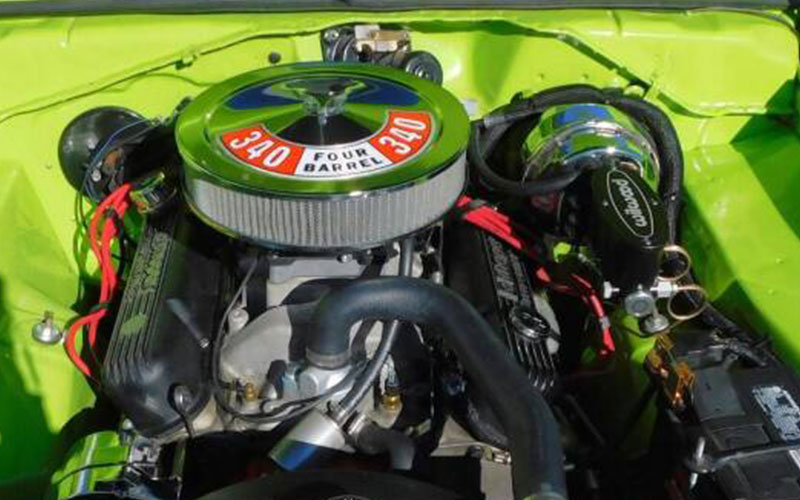
This popularity would generally last throughout Duster production, which ran until 1976, with some 1.3 million built in that time. An upside to this sort of volume is that the Duster, like its corporate cousin the Dodge Dart, remains a very affordable classic car today. The AMC AMX wouldn’t even crack 20,000 units sold in its three-year lifecycle. But popularity alone does not necessarily dictate a winner, so let’s look deeper.
AMC AMX: Special Editions, Packages, and Paint Colors
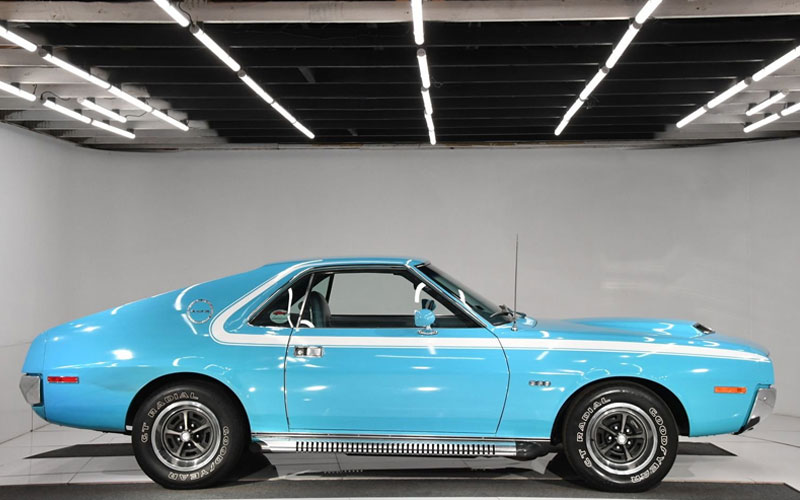
Over on the AMX front, it’s worth noting that consumers could buy a true Corvette competitor for about 25% less. The car was a safety pioneer with industry firsts like a one-piece injection-molded dashboard and innovative fiberglass cabin padding. It was fast, about a half second behind the Duster 340 to 60 mph, and went toe-to-toe with Plymouth on the kooky automaker options that this era was known for.
There was the “Big Bad” paint option that offered neon blue, orange, and green finishes. Angela Dorian, the 1968 Playboy Playmate of the Year, was awarded an AMX finished in “Playmate Pink”, an option that was unofficially produced for a handful of dealerships.
The Von Piranha AMX was a dragster special, built in small numbers with more air intakes and a 950 CFM 3-barrel Holley carb. Built for SoCal dealerships, the California 500 Special boasted Sidewinder side-exhaust pipes, saddle leather interior, and the 390 Go-Package.
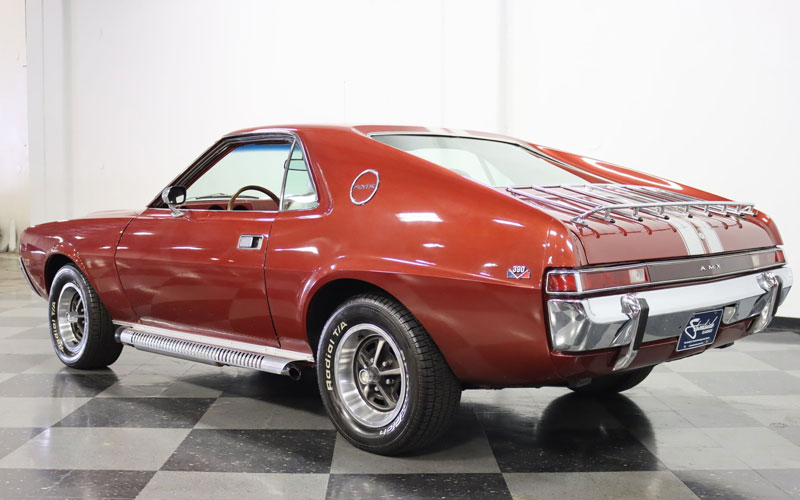
That Go-Package, Go-Pac for short, included a “Twin-Grip” differential, heavy-duty suspension, and power front disc brakes for those looking to exploit the AMX’s handling prowess on the racetrack and dragstrip. And race the AMC AMX did, with highlights including an overall second-place finish in the 1969 SCCA National Championship and some 200 wins in the quarter-mile by Herman Lewis alone.
1970 was the final year for the AMC AMX and it went out with a bang. The suspension was upgraded, a functional ram-air induction system was added to the Go-Pac, and the AMX 390 power output was bumped to 325 hp and 430 lb-ft of torque. Though the AMX nameplate would live on as a high-performance trim package for other AMC models, the original AMX fell victim to the spiraling inflation and heavy hands of insurance companies that afflicted all factory hot rods of the era.
Gold Duster, Space Duster, Feather Duster…Wild Names for Wild Cars
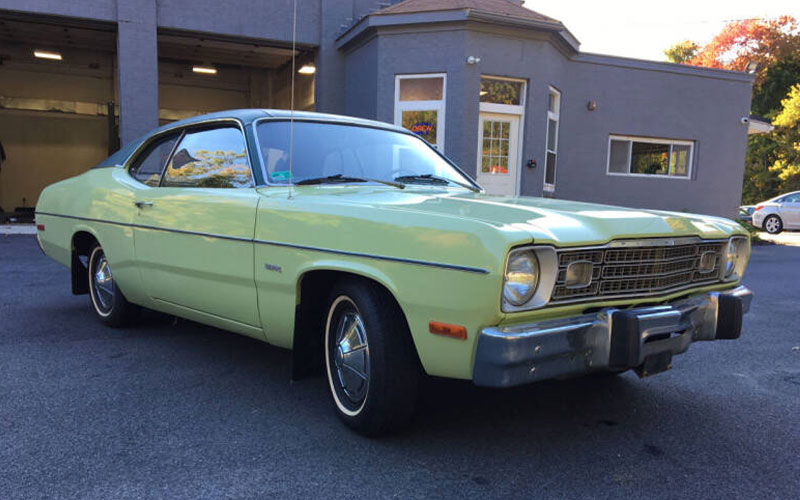
Though the Plymouth Duster was just getting started, it would ultimately see the same fate but not without having some fun first, especially on the package front. There was the Gold Duster with gold badges and stripes, the Space Duster with a folding rear bench to add more cargo space, and of course, the Feather Duster.
Along with owning the title for funniest package title, the Feather Duster was a sign of the times. Featuring lightweight aluminum parts that trimmed curb weight by 5% and a small 225 CID slant-six, the Feather Duster was designed to stretch a gallon of gas.
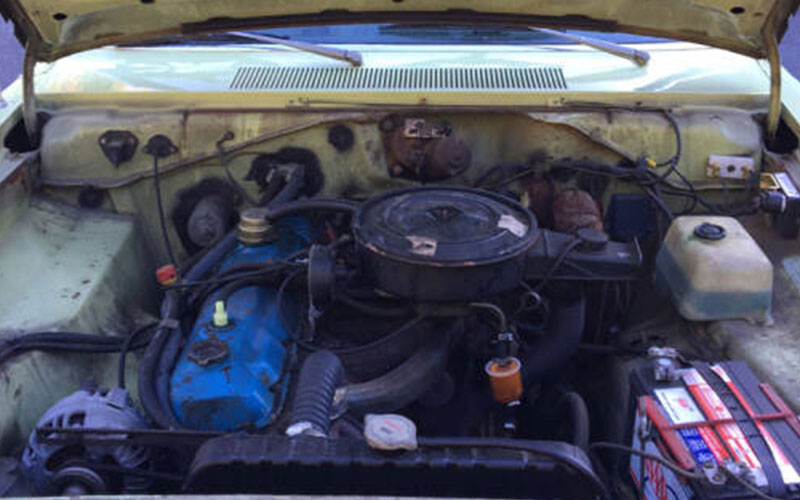
Of course, that 340 CID V8 that the Duster started life with was no shrinking violet. Though the 1972 Plymouth Duster would see a new rating protocol shrink output figures – as did all cars – the 340 was actually punched up to 360 cubic inches of displacement in 1974, an impressive feat given the performance-crushing headwinds at the time.
The Duster 360 offered a dual exhaust, beefier rear end, and heavy-duty suspension. The 360 version of the Duster slipped under the radar as a serious hot rod. And though the Duster was not known for its handling prowess, famed dragsters like Tom “The Mongoose” McEwen showed off what a Duster could do at the strip.
Which Classic Car Wins?
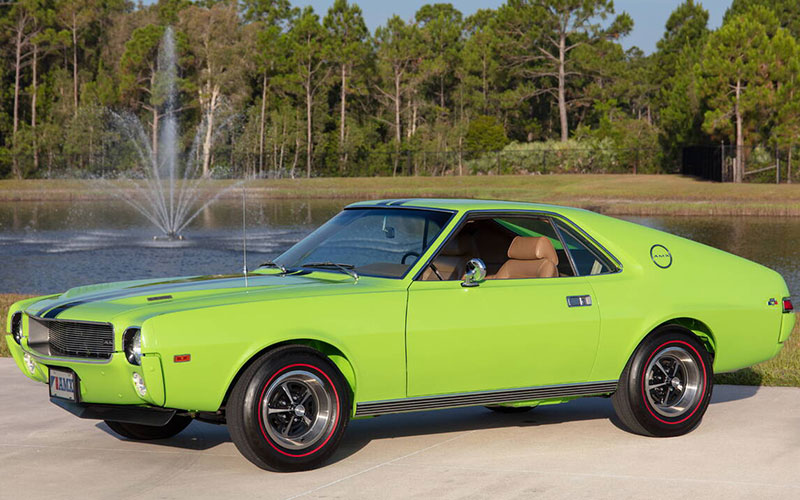
It’s interesting to consider an AMC AMX vs. Plymouth Duster comparison in the context of 1960s and 1970s America. The AMX was a flat-out wild child with almost no peers that was largely ignored by consumers. Especially when compared to the Duster that literally dusted it with 68 times the sales volume. In either case, there’s no question that today, both of these classic cars are cool pieces of American automotive history.
I would argue that the AMX is the better car here. AMC swung for the horizon with the AMX and though they barely cleared first base, they managed to create one of the coolest and most interesting classic cars of all time. If you’re in the market for an affordable classic, don’t miss this list of sweet project cars.



